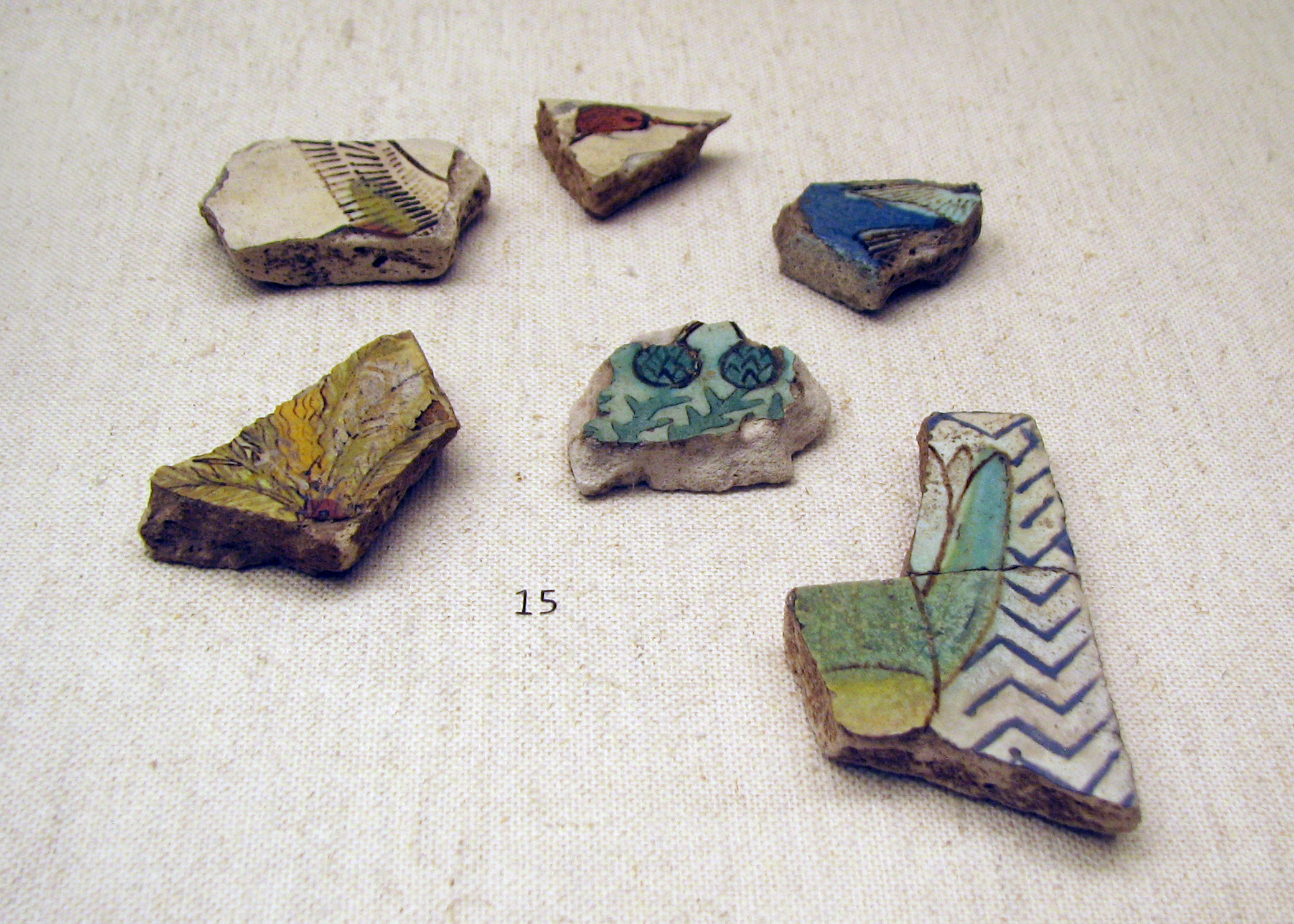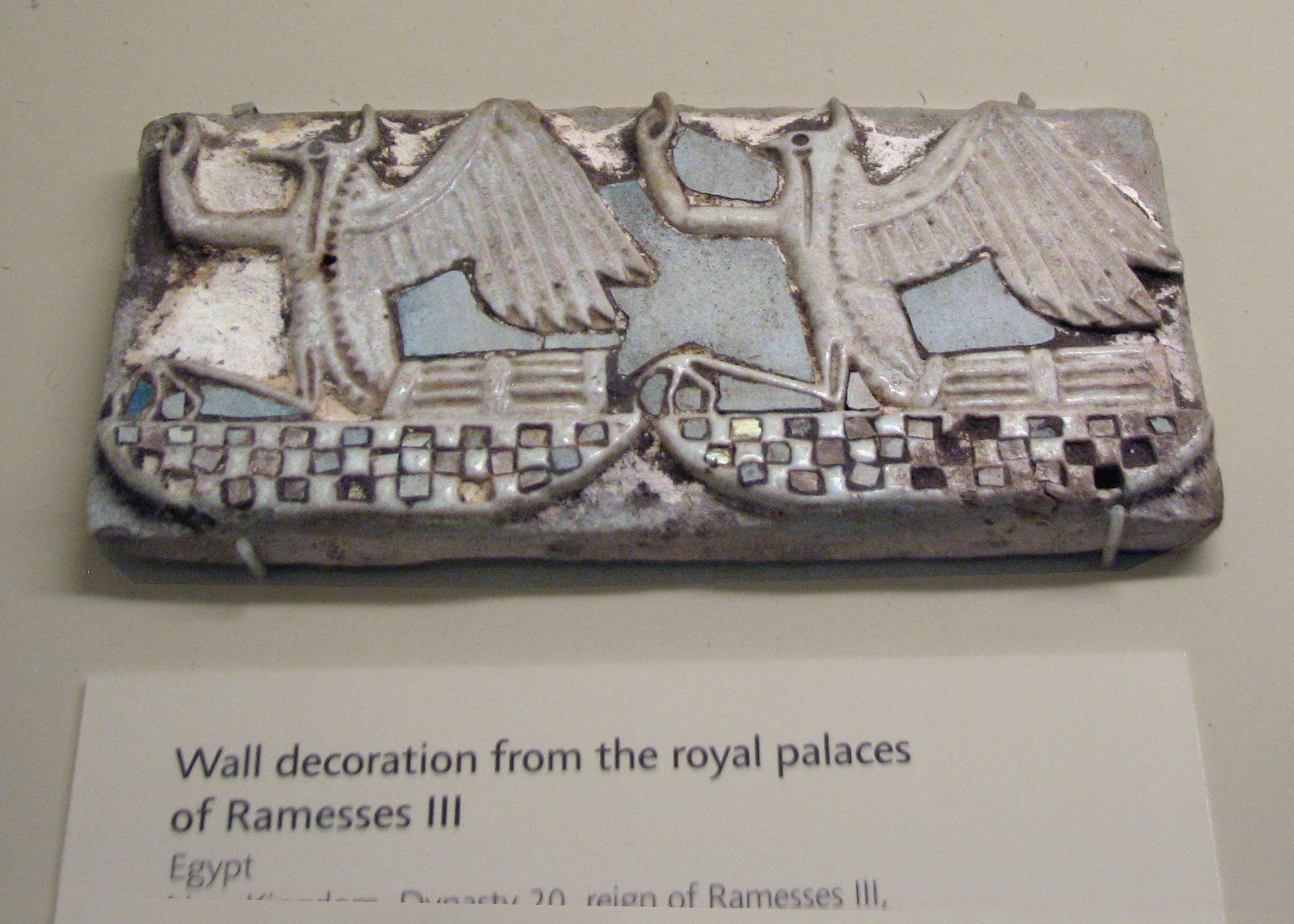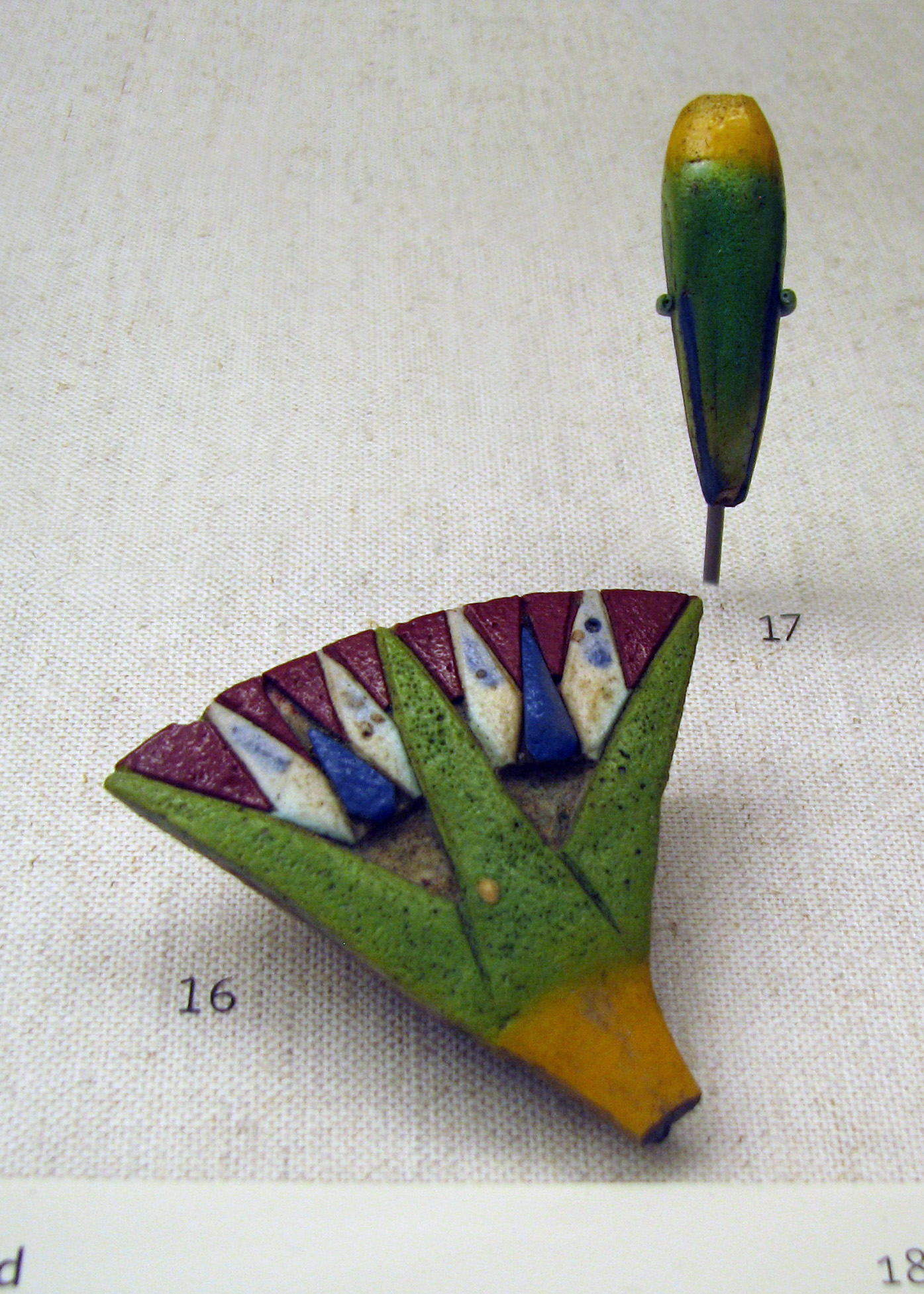
Unfortunately, I didn't photograph the info for these little fragments.

The info we have is the info you see:
Wall decoration from the royal palaces of Ramesses III
Egypt, New Kingdom, Dynasty 20, reign of Ramesses III
Lacking the accession number, I am unable to find it at the museum website. :( But not to despair, we have more info!
The two birds portrayed here are lapwings, called "rekhyt" in ancient Egyptian. This tile may have come from Ramesses' temple at Medinet Habu, for there is a grayscale photo in Wilkinson's Reading Egyptian Art which resembles these birds, (page 87). While in earlier dynasties the rekhyt birds were used to depict foreign enemies, "from the Eighteenth Dynasty onward, the lapwing is found in temple reliefs and on glazed tiles used to decorate the walls of royal palaces. In these representations the bird is often shown in the same pose, but with the arms of a human in the act of giving praise. (*A30)

The bird is typically shown seated in an upright position upon a decorated basket with a five-pointed star before its breast as in ill.2. Here, the lapwing is part of a symbolic statement: the bird itself signifies the people of Egypt, the basket is the neb hieroglyph (*V30) for 'all' and the star (*N14) represents the verb dua: 'to give praise.'" The whole rebus thus spells out the message 'All the people give praise'", (page 87).
Our plaque here resembles Wilkinson's example, except for the 'dua' star; but the pose is the same.
However, Chicago's Oriental museum has an example with the 'dua' star, also from Ramesses III's reign:

New Kingdom, Dynasty 20, reign of Ramesses III, ca. 1182-1152 BCE
Faience, glaze
Lapwing (OIM 16721):
H: 3 15/16; W: 3 3/4; D: 1/2 in (10.1 x 9.7 x 1.8 cm)
Excavated by the Oriental Institute, 1932
Photo ©Joan Ann Lansberry, 2010
|







